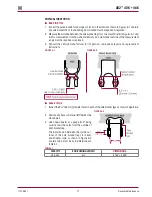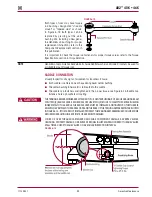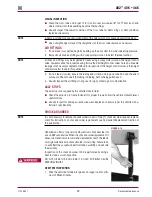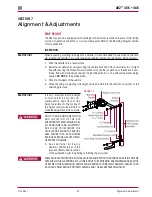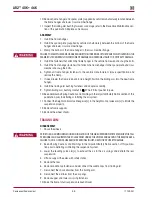
17730-241
21
Preventive Maintenance
AR2
™
40K • 46K
BAR pIN ENd BuSHINg
FIguRE 6‑9
An indication that the bar pin end bushing
requires replacement is when one or more of
the following conditions apply:
Visual inspection of:
■
Contact areas (the flat face areas where
bar pin contacts the axle bracket) on the
bar pin reveals signs of excessive wear
■
The bolt holes in the bar pin reveals signs
of elongation or wear, see Figure 6-9
Bar pin replacement is required, see Figure 6-9,
if the bar pin thickness measures less than:
■
with shims
— 1 .874" (47 .59 mm)
■
without shims
— 2 .252" (57 .2 mm)
BAR PIN SHIMS
An indication that the bar pin shims require replacement is when one or more of the following
conditions apply:
■
Visual inspection of contact areas on the shim reveals signs of excessive wear
■
The thickness of any single leg on the shim, is less than the measurement shown in
Figure 6-10, replacement of bar pin shim is required
FIguRE 6‑10
Original
Thickness
of Shim Leg
Minimum
Thickness
Required
Part Number
1
⁄
8
" (3 .2 mm)
0 .123" (3 .1 mm)
50131-000
3
⁄
16
" (4 .8 mm)
0 .186" (4 .7 mm)
50130-000
¼" (6 .4 mm)
0 .248" (6 .3 mm)
50131-000
3
⁄
8
" (9 .5 mm)
0 .371" (9 .4 mm)
57026-000
RuBBER CENTER BuSHINg
An inspection of the center bushing is necessary when a vehicle is in the shop for major repair
work or every twelve months . Look for:
■
Any metal to metal contact
■
Worn, frayed, or distorted rubber in the center bushing
■
The bushing inner metal that is not centered in the bushing
■
Any equalizing beam to saddle contact











